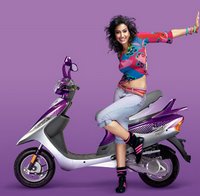Company: Godrej Consumer Products
Brand Count: 163
If the Western Media's projection or prejudice about the social and cultural makeup of India was correct, then Ganga soap would have been the most sold soap brand in the world. Those who have been watching India specific programs in BBC and National Geographic may wond
 er how can such a brand fail in the land of elephants and Sadhus ?
er how can such a brand fail in the land of elephants and Sadhus ?Ganga soap was launched with much fanfare in 1993. The soap was positioned on the religious platform and was claimed to be made of water from the river Ganges. The soap attained salvation in the early 2000.
The brand comes from an accomplished marketer who markets such iconic brands like Cinthol. The brand was promoted heavily and even had the film stars like Govinda endorsing it. Promoted using the tagline " Now bath in Ganga" very directly puts the soap in a religious platform. Reports suggest that the brand's initial sales was encouraging and also there are reports that blame on the P&G and Godrej break up caused the brand to decline.
Ganga had a revitalisation effort in 1997 when Godrej tried to relaunch the brand under the name Doodh Ganga. But those effort went in vain.
The primary reason why the brand failed was that the differentiation was not sustainable over time. Although Hindu's are very religious in nature and revers the tradition but the consumers are discerning when it comes to purchasing products. There is a clear divide between religion and products. Consumers seldom like mixing the two. It is OK if religion and politics are mixed not soups and gods. That may be the reason why the toys of Hindu mythological characters are not popular in India.
The brand when launched was really praised for its innovative thinking. One could see through the logic of the launch. Just looking at the crowd at Kumbh Mela would encourage any marketer to think about launching a product for the devotees of Ganga. But a closer look at the customers could have proved the marketer wrong. Why would a customer buy a product? That is a question that could reveal that Love for Ganga would not rake in sales.
Rather than using Ganga as a differentiator, Godrej could have positioned the product on the basis if Purity and Gentleness like the Pears Soap. The can show the use of Water from Ganga to reinforce the positioning. But the religious platform failed miserably. More over this platform is too old dated for our new generation. Another funny element is that although Hindus revere the Ganges, people are aware that the river is the most polluted one. Hence there were consumer buzz that using a soap made from such water may be dangerous. Sensing this consumer talk, Godrej had to tell that the water was taken from places near the origin of Ganges hence not polluted. Overall it was a messy affair.
Ganga is a brand that could have survived as a small niche. I am still not sure about the exact reasons that brand have failed in the Indian market.The failure of such a brand should inspire a marketer to delve deep into the psyche of Indian consumer before jumping into conclusions.
source:economictimes. Mouthshut .com











